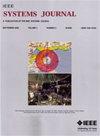HLEM-VMP:一种有效的虚拟机放置算法,用于最小化云数据中心SLA违规
IF 4.4
3区 计算机科学
Q1 COMPUTER SCIENCE, INFORMATION SYSTEMS
引用次数: 0
摘要
在云数据中心中放置虚拟机的目标是优化资源分配,这直接影响到对服务水平协议(sla)的遵守。现有的虚拟机放置策略通过各种方法(如负载平衡和最小化主机过载)在减少SLA违规方面取得了一些成功。然而,SLA遵从性受到多种因素的影响。本文基于启发式原则,充分考虑影响SLA违规的各种因素,提出了HLEM-VMP虚拟机放置策略。该策略采用贪婪方法,通过过滤和评分物理主机来确定虚拟机的位置。我们使用带有Planetlab的Cloudsim模拟器和随机工作负载对EPSO、af - ef和HS3MC-3MIN-1.5等经典算法进行了全面的比较实验。结果表明,HLEM-VMP不仅显著减少了SLA违规,而且在综合指数ESV上表现优异。在此基础上,我们进一步提出了通用- hlem (G-HLEM)模型,该模型允许在能源消耗和SLA违反之间进行权衡,从而增强了模型的泛化性。三种典型应用场景的实验表明,G-HLEM可以满足不同场景的需求,在ESV指数上优于EPSO、af - ef和HS3MC-3MIN-1.5等方法,为通过虚拟机放置策略解决SLA违规问题提供了有价值的见解。本文章由计算机程序翻译,如有差异,请以英文原文为准。
HLEM-VMP: An Effective Virtual Machine Placement Algorithm for Minimizing SLA Violations in Cloud Data Centers
The objective of virtual machine placement in cloud data centers is to optimize resource allocation, which directly impacts the adherence to service level agreements (SLAs). Existing virtual machine placement strategies have achieved some success in reducing SLA violations through various approaches such as load balancing and minimizing host overloads. However, SLA compliance is influenced by multiple factors. Based on heuristic principles, this article fully considers various factors affecting SLA violations and proposes the HLEM-VMP virtual machine placement strategy. This strategy employs a greedy method to determine the placement of virtual machines by filtering and scoring physical hosts. We conducted comprehensive comparative experiments using the Cloudsim simulator with Planetlab and random workloads against classical algorithms such as EPSO, AFED-EF, and HS3MC-3MIN-1.5. The results show that HLEM-VMP not only significantly reduces SLA violations but also performs excellently on the combined index ESV. Building on this, we further propose the General-HLEM (G-HLEM) model, which allows for a tradeoff between energy consumption and SLA violations, thereby enhancing the model's generalizability. Experiments in three typical application scenarios demonstrate that G-HLEM can meet the needs of different scenarios and outperforms methods like EPSO, AFED-EF, and HS3MC-3MIN-1.5 on the ESV index, providing valuable insights for addressing SLA violation issues through virtual machine placement strategies.
求助全文
通过发布文献求助,成功后即可免费获取论文全文。
去求助
来源期刊

IEEE Systems Journal
工程技术-电信学
CiteScore
9.80
自引率
6.80%
发文量
572
审稿时长
4.9 months
期刊介绍:
This publication provides a systems-level, focused forum for application-oriented manuscripts that address complex systems and system-of-systems of national and global significance. It intends to encourage and facilitate cooperation and interaction among IEEE Societies with systems-level and systems engineering interest, and to attract non-IEEE contributors and readers from around the globe. Our IEEE Systems Council job is to address issues in new ways that are not solvable in the domains of the existing IEEE or other societies or global organizations. These problems do not fit within traditional hierarchical boundaries. For example, disaster response such as that triggered by Hurricane Katrina, tsunamis, or current volcanic eruptions is not solvable by pure engineering solutions. We need to think about changing and enlarging the paradigm to include systems issues.
 求助内容:
求助内容: 应助结果提醒方式:
应助结果提醒方式:


